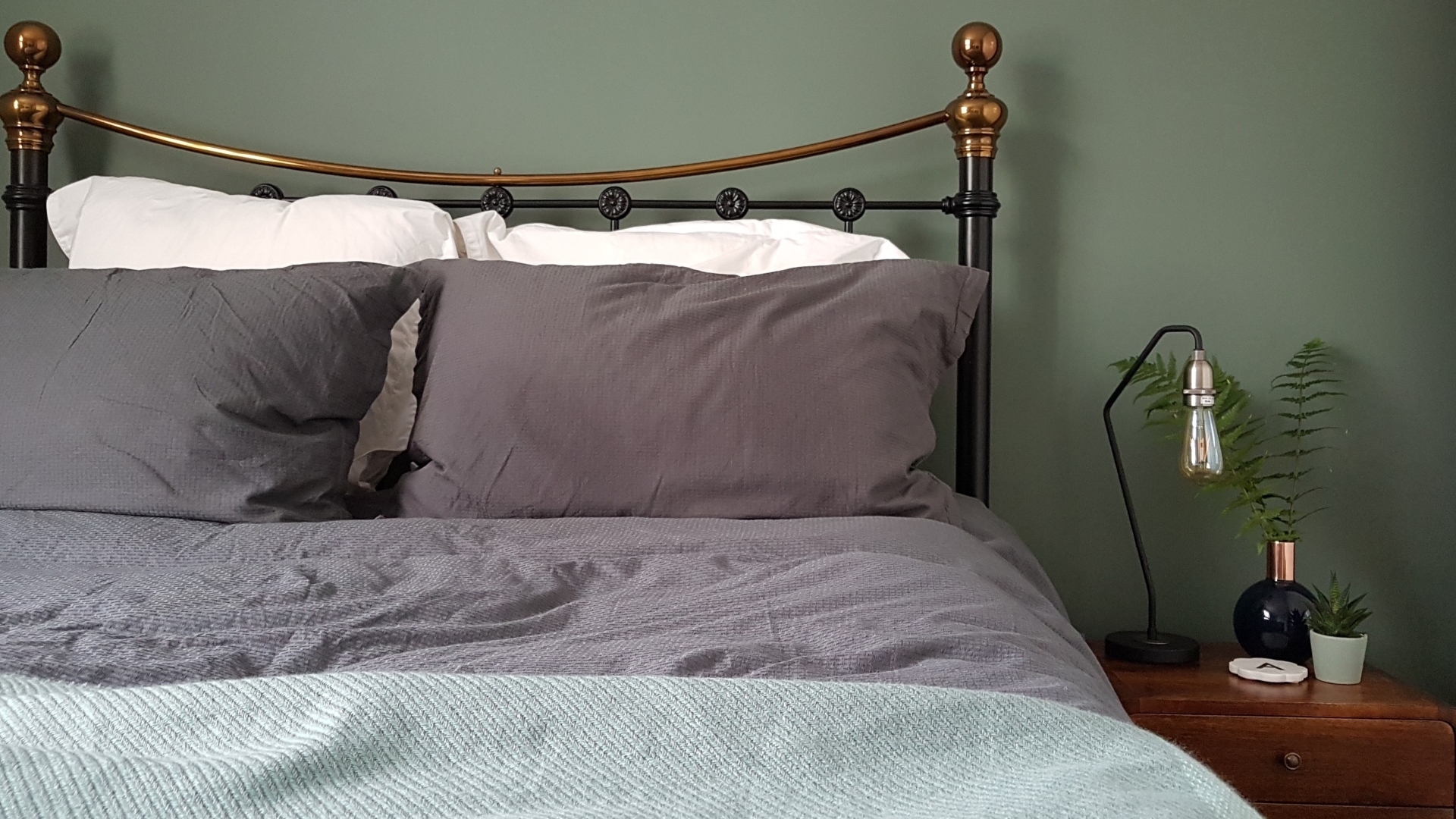As human beings, we have a basic need to be connected to the natural world. Study after study has confirmed that when we spend time in nature our well-being increases and there are measurable effects on our minds and bodies. From our immune systems to our cardiovascular health and our moods, submerging ourselves in nature is associated with positive outcomes and enables us to thrive.
The Japanese are so familiar with this concept that they have a specific term – shinrin-yoku – which translates as ‘forest bathing’. Its effects have been well-studied.
I love being outdoors and I know that when I do this I feel much better in myself and in my life. But what I have also come to learn is that you don’t need to be outdoors to feel closer to nature. By considering the five tips below, you can connect with nature in your home.
1 Paint your room green
Because of the associations with nature and the outdoors, green can be a very calming colour. Of course, it depends on the shade – lime green is definitely more stimulating and vibrant than a soft forest green – but chosen carefully green rooms can be very soothing for our nervous systems. Green has been having an interiors moment for a while now, so there are plenty of shades to choose from. My current favourite is Green Smoke, from Farrow and Ball, which I’ve recently used in a client’s master bedroom and it’s a triumph.
To create a very harmonious, tonal scheme, it’s lovely to layer up different greens that are still closely related to each other, mirroring the effect of swathes of green in a landscape. And of course, you don’t have to start or stop at painting the walls. Cupboards and shelves will benefit from the green treatment too.
2 Open the windows
It might sound obvious, but opening your windows can bring you closer to nature by allowing you to experience the natural sounds outside. Even if you live in a city, you can still be treated to stunning birdsong at the beginning and end of the day (which has been proven to benefit our well-being), as well as the soothing sounds of the weather. Personally I love a good thunderstorm, and I’m pretty happy when I can sit up in my loft, windows open, listening to the rain as it batters the roof!
3 Bring in plants
The recently published GoodHome Report by the Happiness Research Institute and Kingfisher found that green space in our home plays an important role in our happiness. But whether you have a garden or not, you can achieve the benefits of greening your space by bringing plants into your home. The act of tending plants is mindful, and aligns us with natural, annual cycles. It also connects us to the natural world through touch, as we get our hands covered in soil and thereby benefit from exposure to a range of beneficial bacteria. And even the very presence of plants inside is a great way to clean our over polluted air. If you’re not an experienced plant owner or aren’t sure which species will be happiest where, How Not to Kill Your Houseplant by Veronica Peerless is a fantastic guide that will get you started.
4 Include pictures of natural scenes
Some studies have suggested that even looking at photographs of natural scenes is sufficient to improve our recovery after stress. Using pictures of nature in your home is an easy way to create touch points that remind you of how you feel when you’ve been in a natural environment. It’s also a lovely way to evoke particular places that resonate strongly with you, and that have played an important part in your life. As I type this post I’m looking at a photograph on my study wall which was taken on Dartmoor, a place I associate very strongly with my childhood. Taken at the top of a Tor, it reminds me of many vigorous walks with my extended family in rain and shine, and the lovely relaxed feeling I had when we finally returned home and collapsed with heavy limbs!
5 Use natural materials
Many of us are turning our backs on plastics and synthetic materials, for very sound environmental reasons. But another reason to replace them with natural materials where possible is that they connect us back to the natural world and to our natural history. Wood, stone and plant-based materials such as linen and bamboo have been used for thousands of years, and when sourced locally they even link our homes to their surrounding environment. Of course, it’s important to source any natural materials responsibly, but a bit of research will enable you to make sure that you’re using only what can be replaced.
You don’t need space or even much money to connect with nature in your home using these five tips. Try one or try them all, and notice how it makes you feel. Let me know how you get on!
For more advice on how to connect with nature in your home, please contact me.

